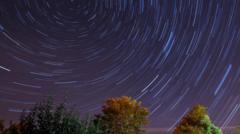The Perseid meteor shower stands out as one of the most anticipated annual celestial events, often regarded as the best meteor display of the year. This spectacle provides an excellent opportunity for stargazers to witness numerous bright streaks across the night sky.
To experience the Perseids, timing is crucial. The shower is active for several weeks, typically from mid-July to late August, but its peak activity usually occurs around August 12th or 13th. For the most impressive views, observers should plan to watch during the pre-dawn hours, after midnight, when the shower’s radiant point is high in the sky. The period between midnight and 4 AM local time is generally optimal, as the Earth is turning into the stream of debris left by Comet Swift-Tuttle.
Choosing the right location significantly enhances the viewing experience. The primary requirement is a dark sky, far removed from urban light pollution. Rural areas, national parks, or designated dark-sky preserves are ideal. Find an open space with an unobstructed view of the sky, allowing a wide field of vision. While the meteors can appear anywhere, knowing the general direction of the constellation Perseus can be helpful, though it’s not necessary to stare directly at it.
Preparation is minimal but effective. No special equipment like telescopes or binoculars is required; the meteors are best seen with the naked eye. Allow your eyes at least 20 to 30 minutes to fully adapt to the darkness, avoiding any bright lights, including phone screens, during this period. Bring a comfortable chair or a blanket to lie down on, as scanning the sky for extended periods can be tiring. Dress appropriately for the night temperatures, which can drop even in summer. Patience is key, as meteor showers can have lulls in activity before bursts of bright fireballs or swift streaks. The Perseids are known for their high number of visible meteors per hour during their peak, offering a reliably spectacular show for those who take the time to look up.



